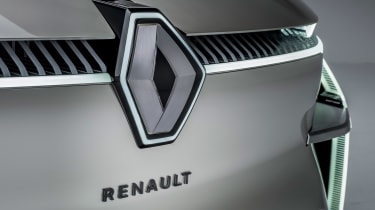Renault posted a loss of almost £6.6 billion for the first half of 2020 – and Nissan’s finances took a £1.12 billion hit
Renault and Nissan have released their financial results for 2020. Renault suffered a massive £6.6 billion downturn for the first half of the financial year, while Alliance partner Nissan lost £1.12 billion in the first financial quarter.
Both manufacturers’ sales figures were also down for the period, with the Renault Group (that’s Renault, Dacia, Alpine and Lada) suffering a decrease of 34.9 per cent globally and 41.8 per cent in Europe – making it the second-worst hit region for the group after the Americas. Nissan’s sales fell by 47.7 percent globally and 33.7 percent in its home market of Japan.
Future of Alpine to be examined as part of Renault cost cutting measures
The news follows shortly after the Renault–Nissan–Mitsubishi Alliance announced its new cost-cutting initiative, which will see Mitsubishi pull out of the UK market and the trio increase the amount of shared technology across their model ranges in an effort to reverse the effects of the coronavirus pandemic.
In total, the initiative is expected to save the Alliance around €2 billion (£1.8 billion) in costs over the next three years. It’s very much unlike the group’s previous product strategy, too. The old model was based on expansion and growth, while this new strategy is built on competitiveness and profitability.
Currently, there are seven platforms used across the Renault–Nissan–Mitsubishi Alliance. The group’s latest business model will see that number reduced to just four, with Renault’s various CMF underpinnings providing the basis for the majority of the Alliance’s models.
Alliance members will standardise production across their models, sharing engines, chassis technology, body panels and infotainment systems. Nissan will lead the way for the trio’s all-electric powertrains and autonomous driving technology, while Mitsubishi will handle the Alliance’s plug-in hybrid technology development.
Using this method, Renault, Nissan and Mitsubishi aim to achieve the same global market coverage with 20 percent fewer models. The reduction in duplicate parts will also put spending at a maximum of eight percent, compared to 10 percent in 2019.
Jean-Dominique Senard, Chairman of the Alliance Operating Board and Renault, called this production method the “leader/follower” scheme. Essentially, it will see one Alliance brand develop a vehicle first, with the other two members using it as the basis for their own – and the trio aims for half of their models to be produced under this scheme by 2022.
Mitsubishi to exit UK and European car markets as gradual withdrawal confirmed
As such, Nissan will lead the replacement of the Alliance’s Qashqai-sized SUVs after 2025, with Renault taking the reins for the next-generation Juke-sized crossover. A new standardised compact electric vehicle is also on the way, which will replace the aging Nissan Leaf and consolidate Renault’s and Nissan’s respective models onto a single platform.
The Renault-Nissan-Mitsubishi Alliance has already pulled off this trick with its commercial vehicle production. The Renault Kangoo and Nissan NV250, for example, share the vast majority of their components – as do the Renault Trafic and Nissan NV300 as well as the Renault Master and Nissan NV400.
Elsewhere, the Alliance has also pledged to beat the $100 per kWh battery threshold for its all-electric models. However, the timescale for this pledge is yet to be confirmed, as is the technology the Alliance will use to meet this demand.
Ex-Peugeot head of design Gilles Vidal joins Renault…
Source: Read Full Article



 Future of Alpine to be examined as part of Renault cost cutting measures
Future of Alpine to be examined as part of Renault cost cutting measures Mitsubishi to exit UK and European car markets as gradual withdrawal confirmed
Mitsubishi to exit UK and European car markets as gradual withdrawal confirmed